December 14th, 2023
7minute read
Anyone who ever flew an Army helicopter reveres the Loach.
Uncle Sam called the bizarre little egg-shaped aircraft the OH-6A Cayuse.
Its official classification was Light Observation Helicopter, hence the informal appellation Loach.
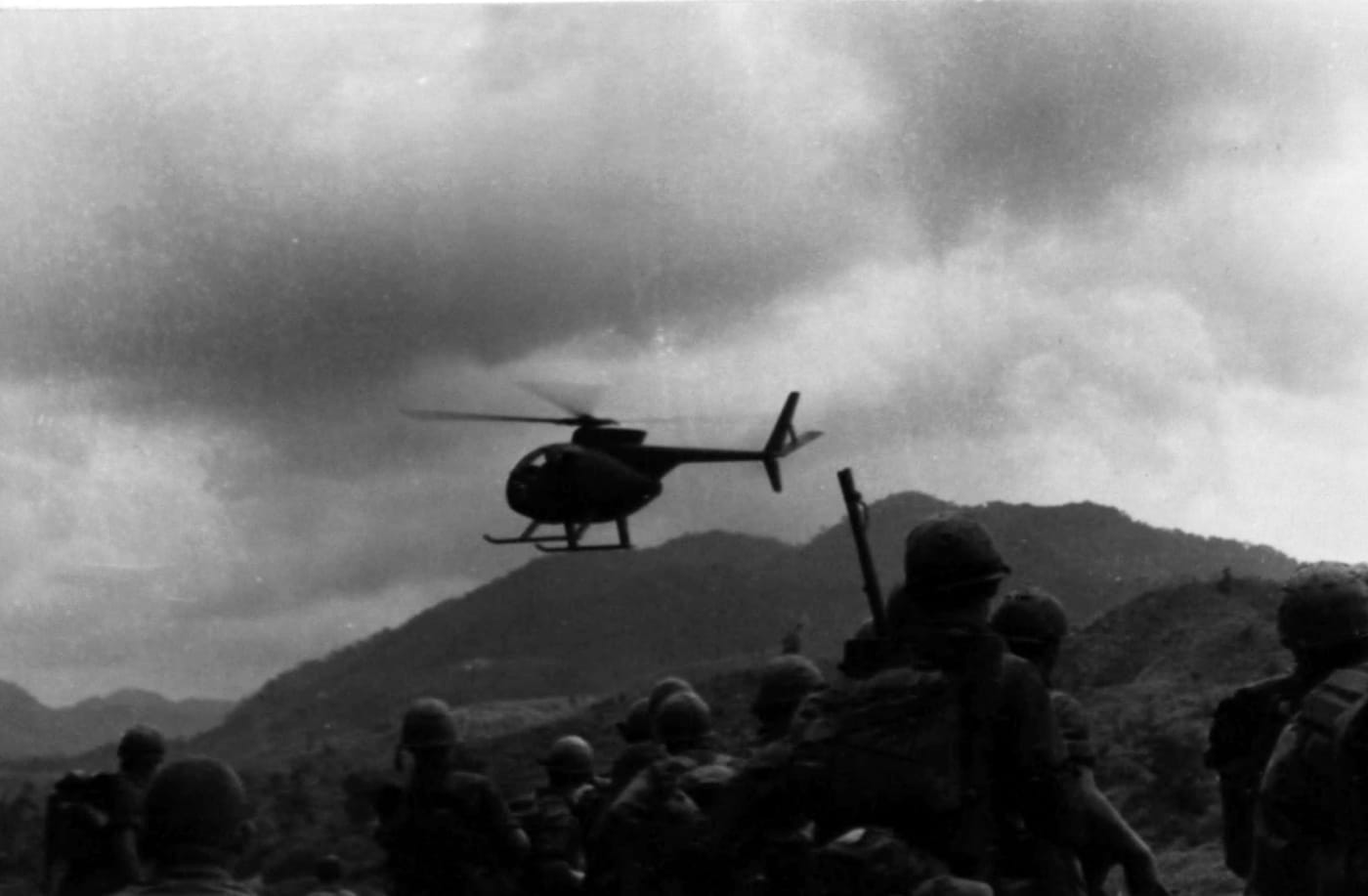
Leathernecks of the First Marine Division watch an OH-6A “Cayuse” of the U.S. Army’s First Cavalry Division during Operation Pegasus, April 1968. Image: Staff Sgt. J.A. Reid/USMC
The Loach looks and sounds like a giant, angry bumble bee.
It is a simply magnificent machine.
The Loach was used for scouting missions during the Vietnam War.
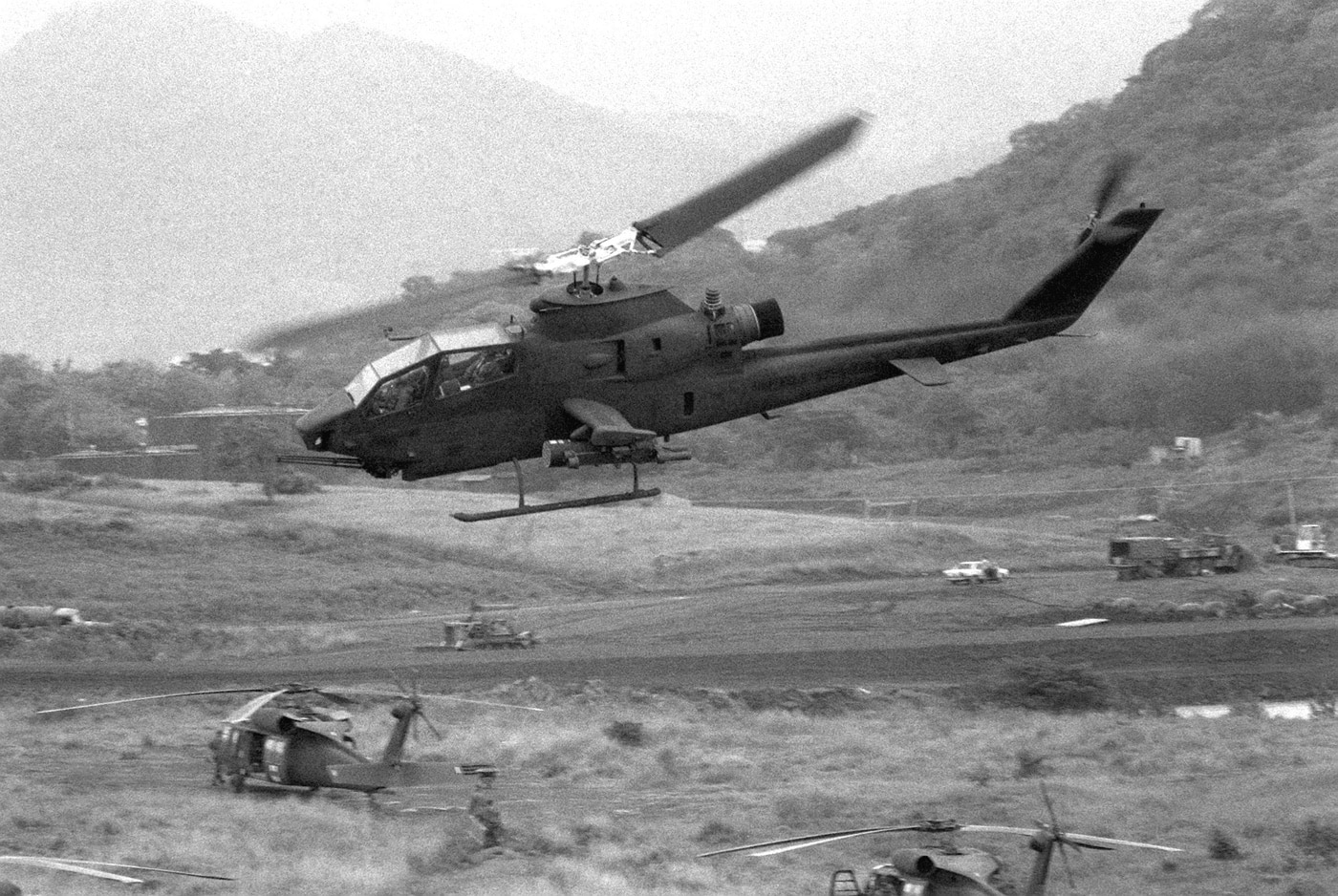
An AH-1 Cobra helicopter flies over Point Salines Airfield during Operation Urgent Fury. Image: NARA
The aircraft was flown without doors at extremely low levels.
Offsetting the weight on the left was an M-134 minigun in an XM21E1 mount.
This electrically-powered 7.62x51mm belt-fed Gatling gun cycled at either 2,000 or 4,000 rounds per minute via a two-stage trigger.
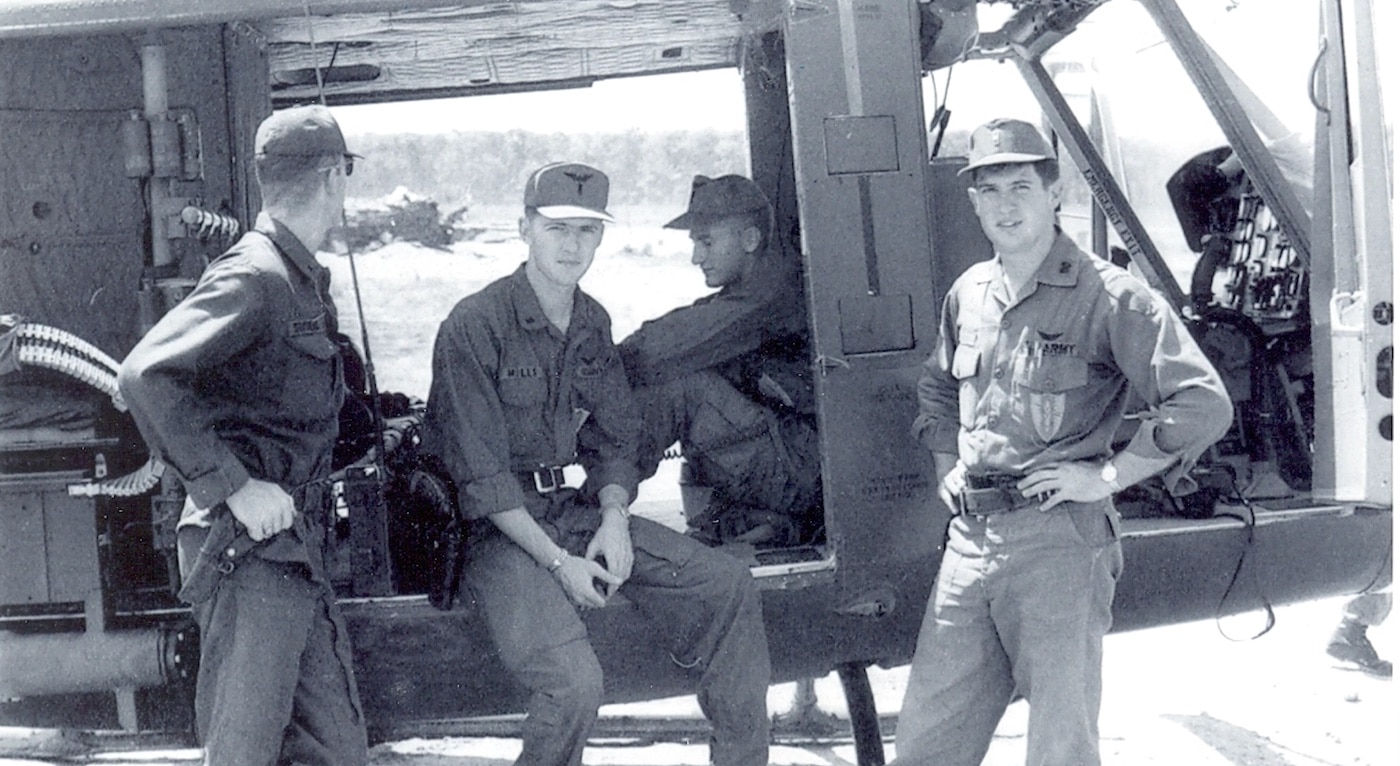
Lt. Col. Hugh Mills, U.S. Army (ret.) is in the center of this photo. Image courtesy of Lt. Col. Mills andPatriot Features.
It fed from a 2,000-round ammunition magazine.
The pilot sighted the minigun via a grease pencil mark on the inside of the Plexiglas canopy.
The Loach operated most commonly as part of a Pink Team.
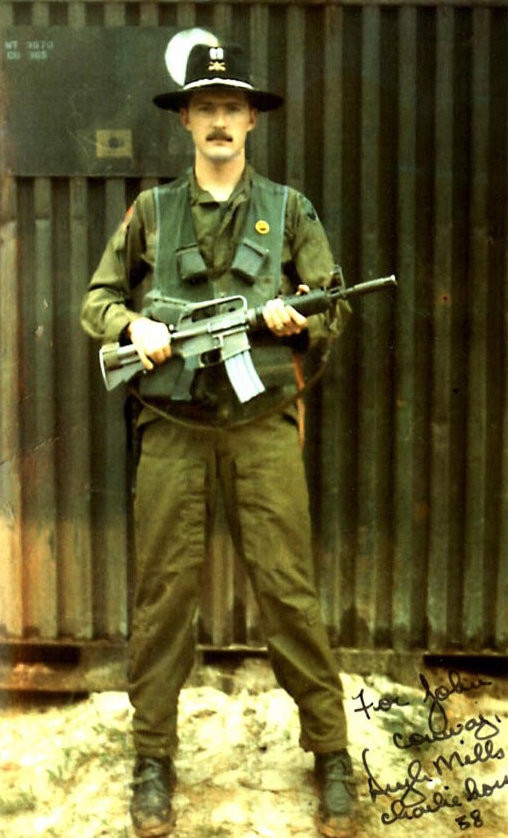
Lt. Col. Hugh Mills with his CAR-15 rifle in Vietnam. Image courtesy of Hugh Mills and theVietnam Helicopter Pilots Association.
The two elements maintained constant radio contact.
Experienced Pink Teams were devastating killers on the battlefield.
Survival and tactical effectiveness demanded both nerves of steel and exceptional pilotage.
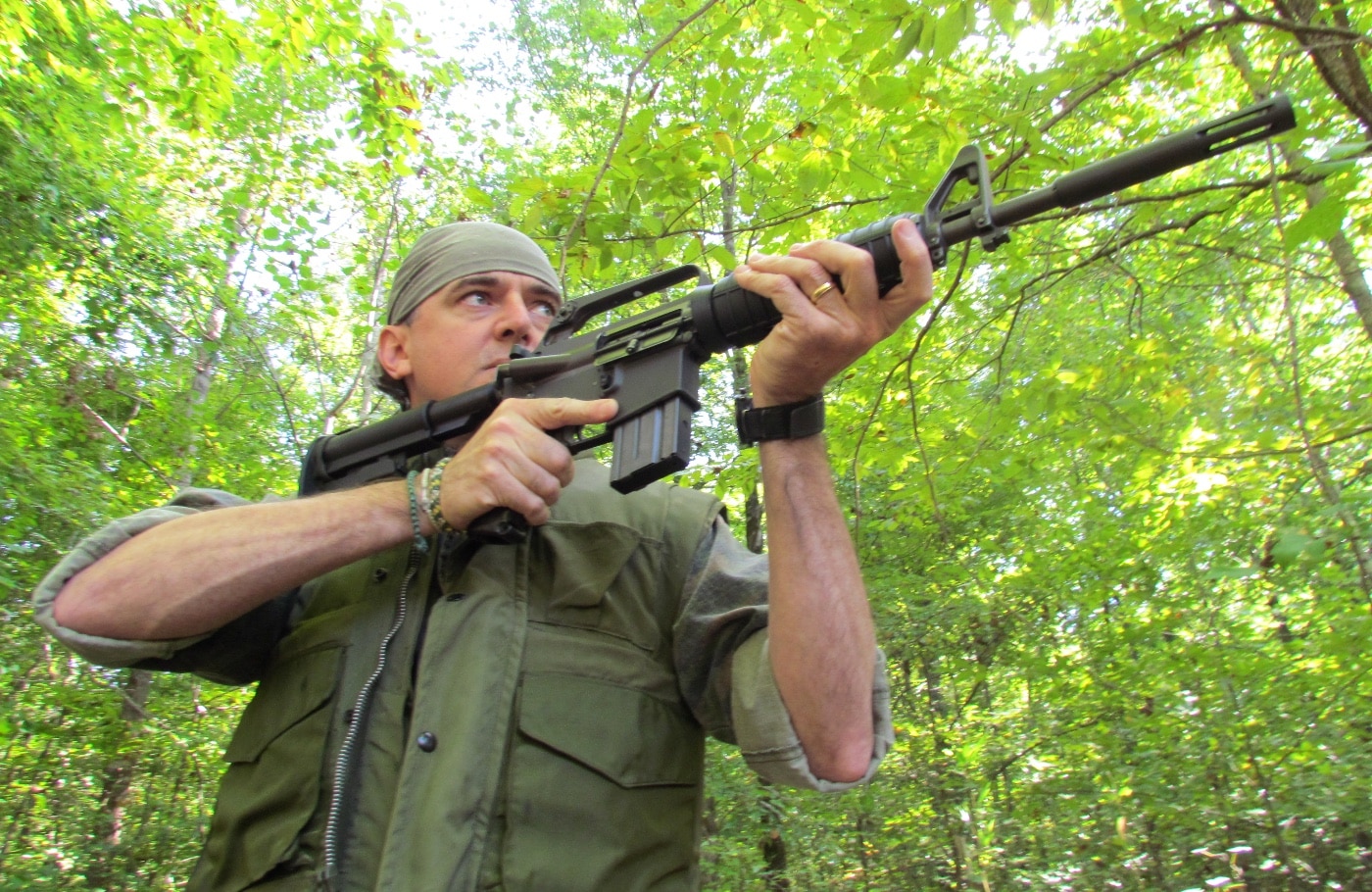
Above, the author carries a CAR-15-style rifle. It was a lightweight and maneuverable close quarters combat tool.
He is a legend among Army aviators, even today.
Among rotary-wing aviators, that is the Armys highest accolade.
Lt. Col. Mills earned every bit of that love.
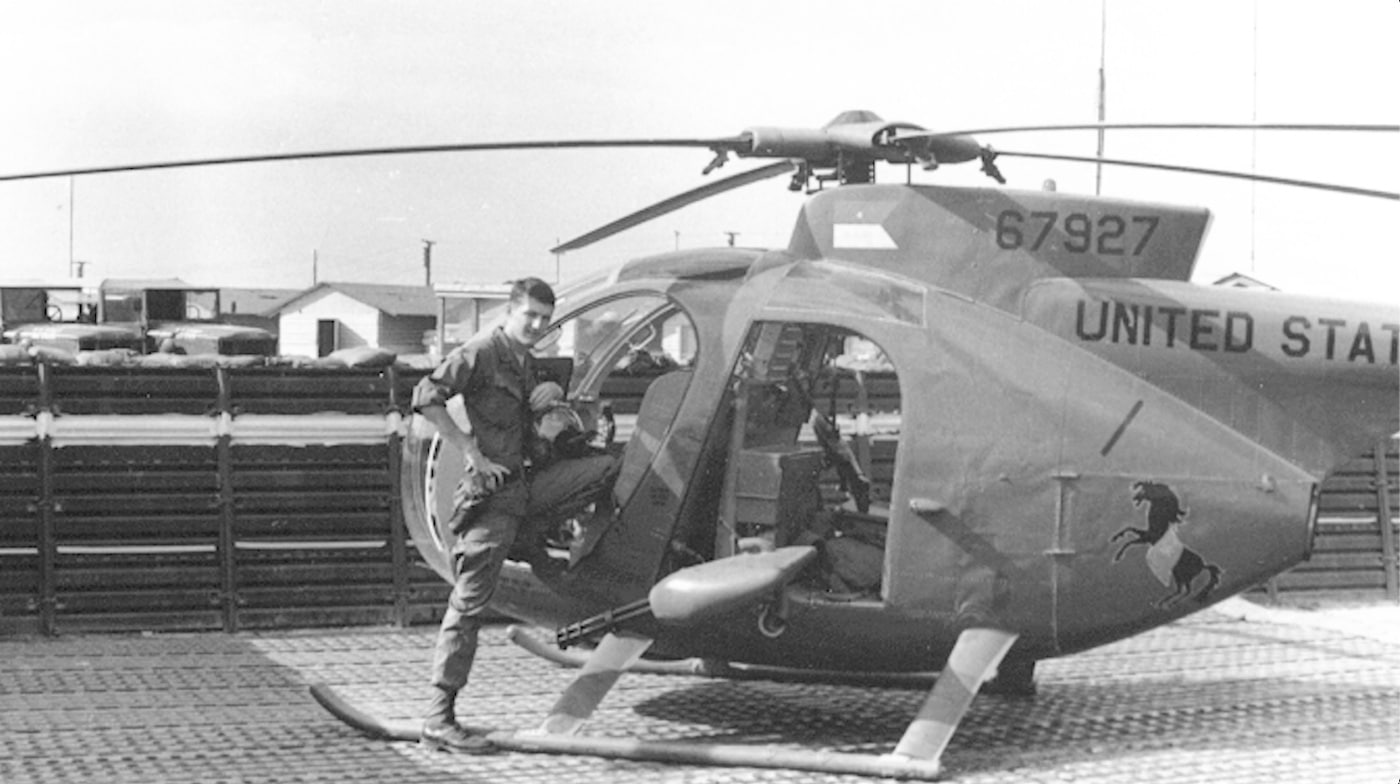
Lt. Col. Hugh Mills with his his OH-6A helicopter. Visible are both the minigun and M60 machine gun. Image courtesy of Lt. Col. Mills andPatriot Features.
In the back was his regular crew chief, Jim Parker.
Mills and Parker had flown together for months and were forged into an exceptionally effective scout team.
Without warning, Mills Loach was engaged by a well-sited VC .50-caliber machine gun.
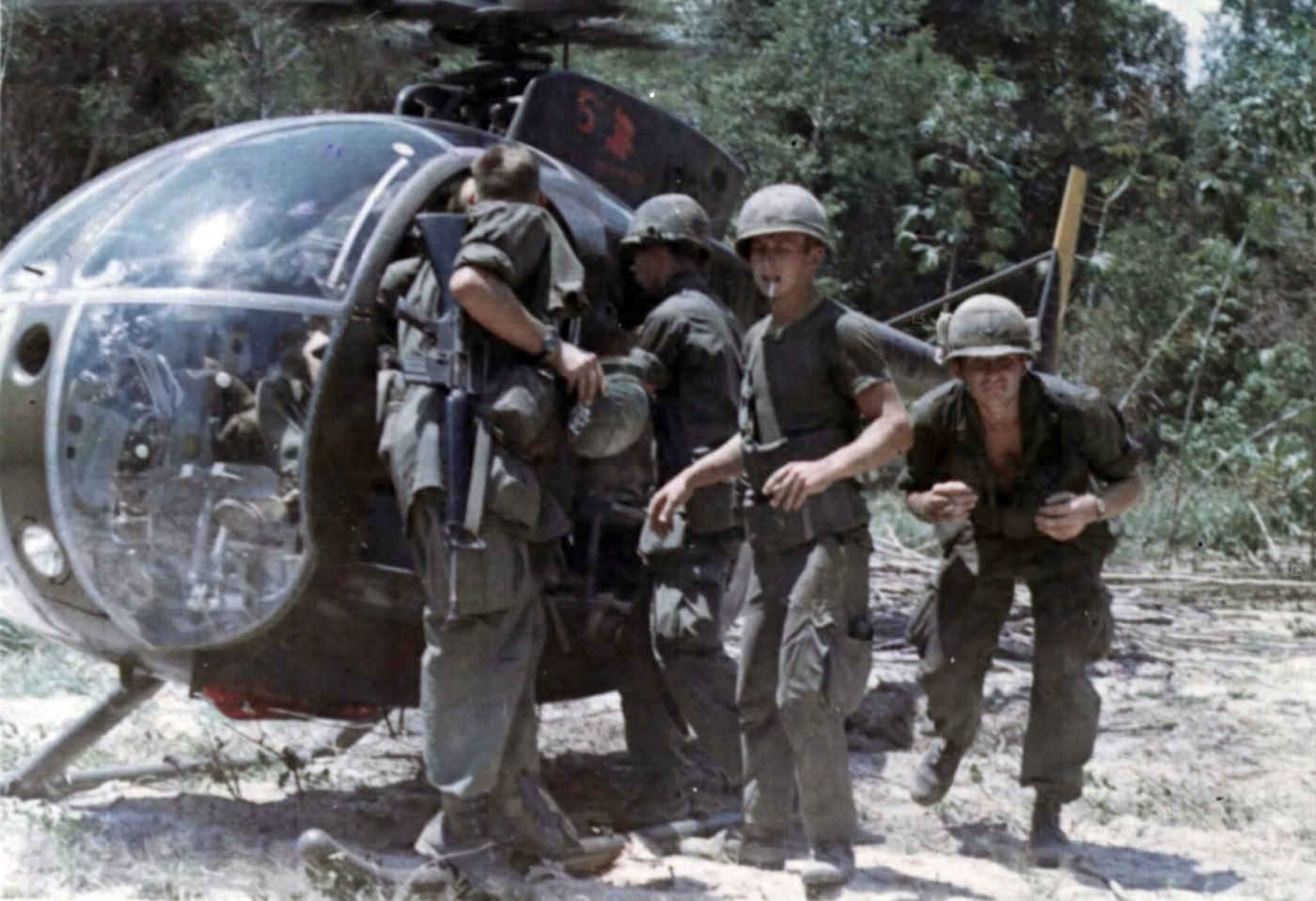
Soldiers of the U.S. Army’s 25th Infantry Division load captured documents found in an NVA training camp aboard an OH-6A helicopter. Image: NARA
There resulted a skull-crushing vibration as the hearty Loach clawed to stay in the air.
Mills retained control of the stricken aircraft, but only just.
He guided the doomed helicopter to a controlled crash on a nearby flat piece of rice paddy.
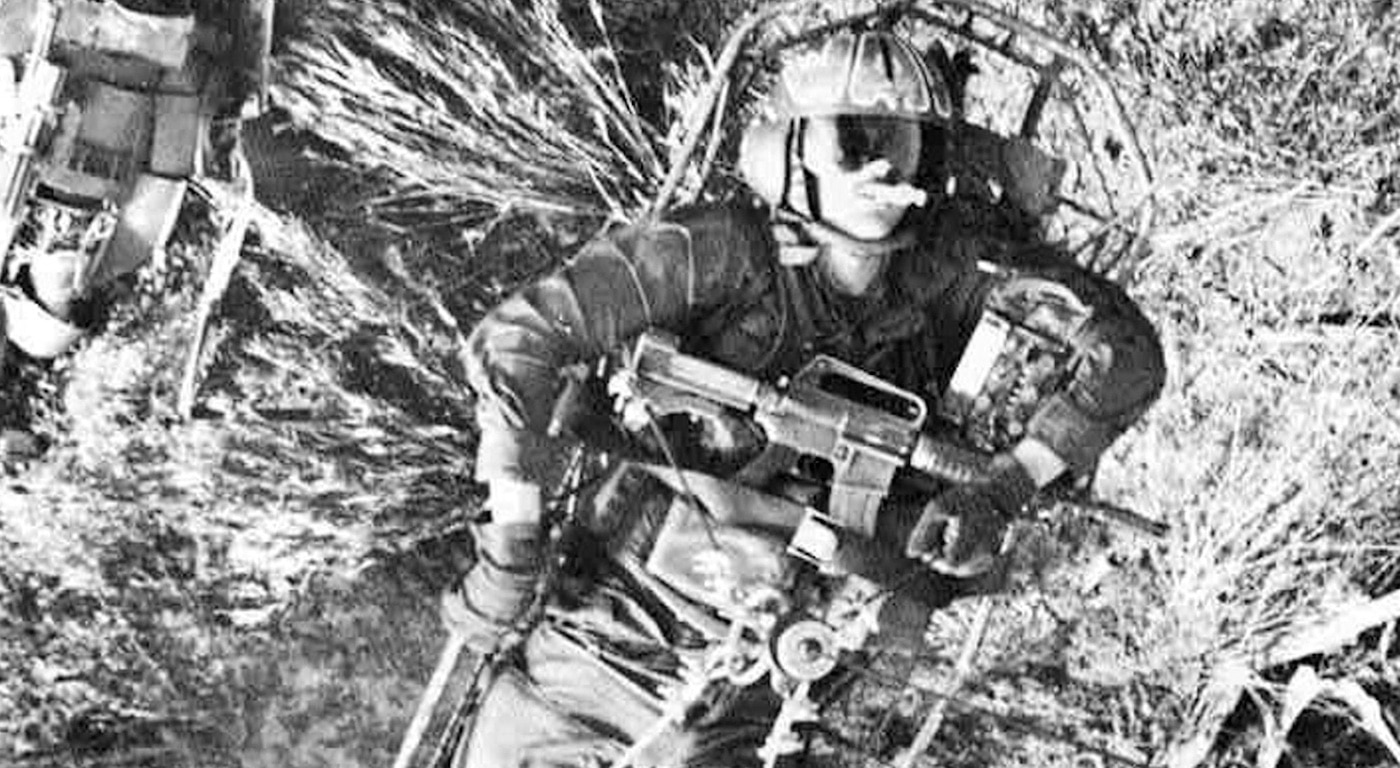
Lt. Col. Hugh Mills is rescued by U.S. Air Force pararescuemen (PJs) in anHH-3E “Jolly Green Giant”after being downed during combat in Vietnam. Image courtesy of Lt. Col. Mills andPatriot Features.
Parker split his chin on the front sight of his M60, but both aviators were otherwise unhurt.
Mills spotted a pair of VC soldiers shooting at them with AK-47s from about 175 yards away.
He fired a burst from his CAR-15 as Parker sprayed the area with his M60.
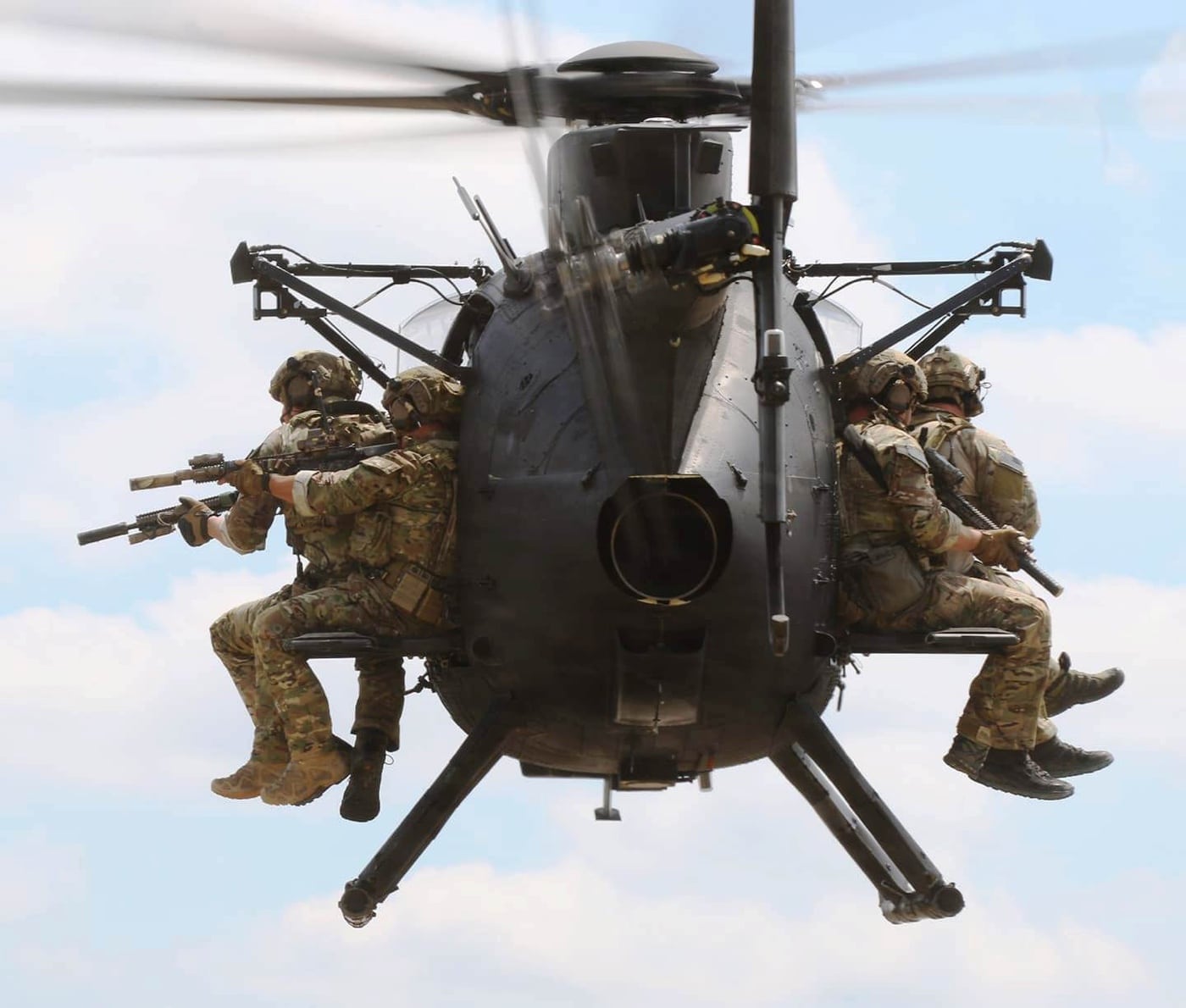
A MH-6M Little Bird of the U.S. Army’s 160th Special Operations Aviation Regiment transports soldiers from the 1st Ranger Battalion during a rapid deployment capabilities exercise. Image: U.S. Army
Both enemy soldiers fell, but they just kicked over the anthill.
A substantial VC force began slathering the crash site with fire and moving toward the two trapped aviators.
Parker returned to the crashed aircraft to retrieve more M60 ammo as Mills covered him with his CAR-15.
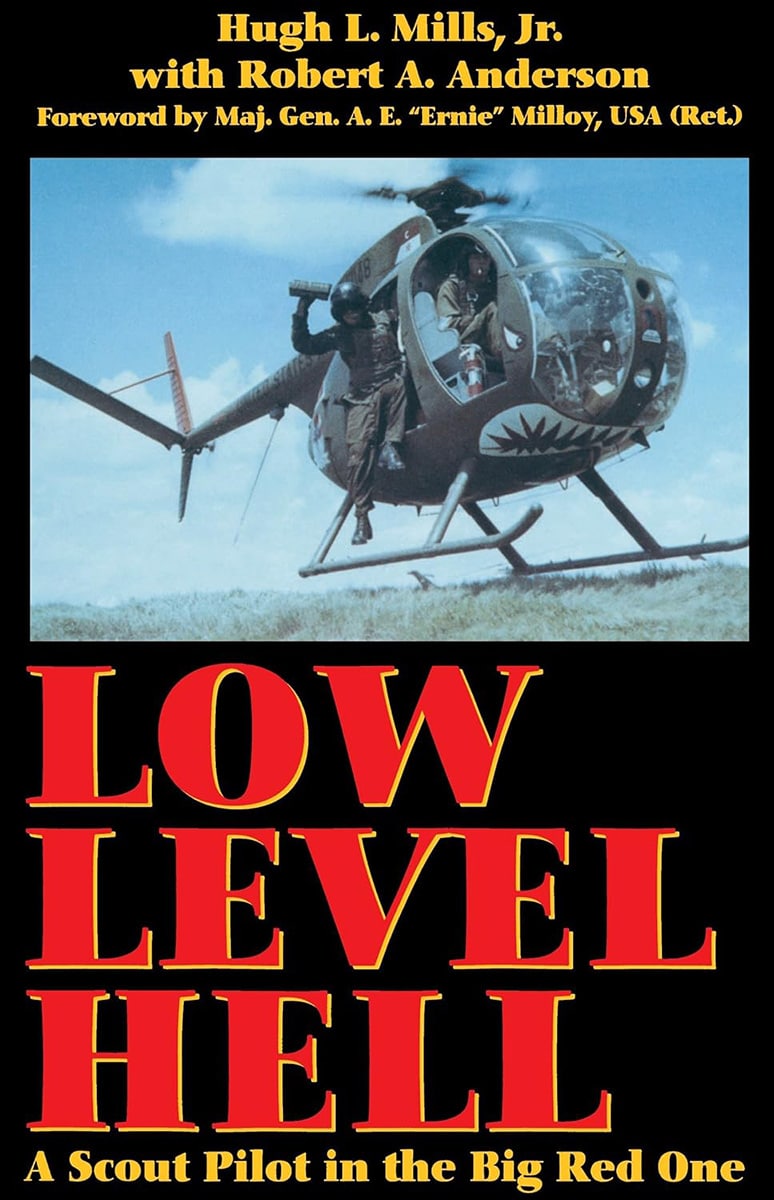
Meanwhile, the high-cover Snake pummeled the tree line with 2.75 rockets and minigun fire.
However, the Cobra soon ran out of ammo.
Parker and Mills clambered aboard the hoveringHueyand made their escape before the remaining VC could stop them.

They had a G-model Cobra flying top cover.
As they pitched over a ridgeline, Mills surprised an NVA heavy weapons platoon on the march.
Without hesitation, he opened up with his minigun at close range as Parker unlimbered his M60.
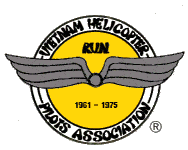
The NVA troops answered with a fusillade of AK-47 fire.
A pair of NVA soldiers tore off down a paddy dike toward the wood line and cover.
His burst passed through the nearest NVA soldier and into his buddy, killing them both.
Mills chased the remaining NVA troops around the paddy until both he and Parker ran out of ammo.
Parker then unlimbered both his M16 as well as a 12-gauge pump shotgun.
In two minutes of unfettered combat, their Loach had been hit 25 times.
Mills seat armor stopped several more.
One AK round transited the engine compartment but missed anything significant.
Another shot the op rod off of Parkers M60.
Supporting ARP (Aero Rifle Platoon) grunts subsequently inserted and swept the area.
He was shot down an amazing 16 times and was wounded three times in combat.
He ultimately flew 3,300 combat hours in OH-6A and AH-1G helicopters.
His record as a combat aviator will never be bested.
The OH-6A was tragically replaced by the Bell OH-58 in Army service.
Both aircraft shared a common engine, but in my opinion the Loach was a massively better aircraft.
I flew OH-58s myself, and we all mourned the passing of the Loach.
However, that was not the last Uncle Sam saw of this extraordinary little machine.
They call it the Killer Egg.
These immensely capable machines feature an upgraded powertrain along with a more efficient five-bladed rotor system.
If ever I win the lottery, my first call will be to my wife.
My second will be to Boeing to pick up an MH-6 of my own.
It is available on Amazon.
Go to forum thread




